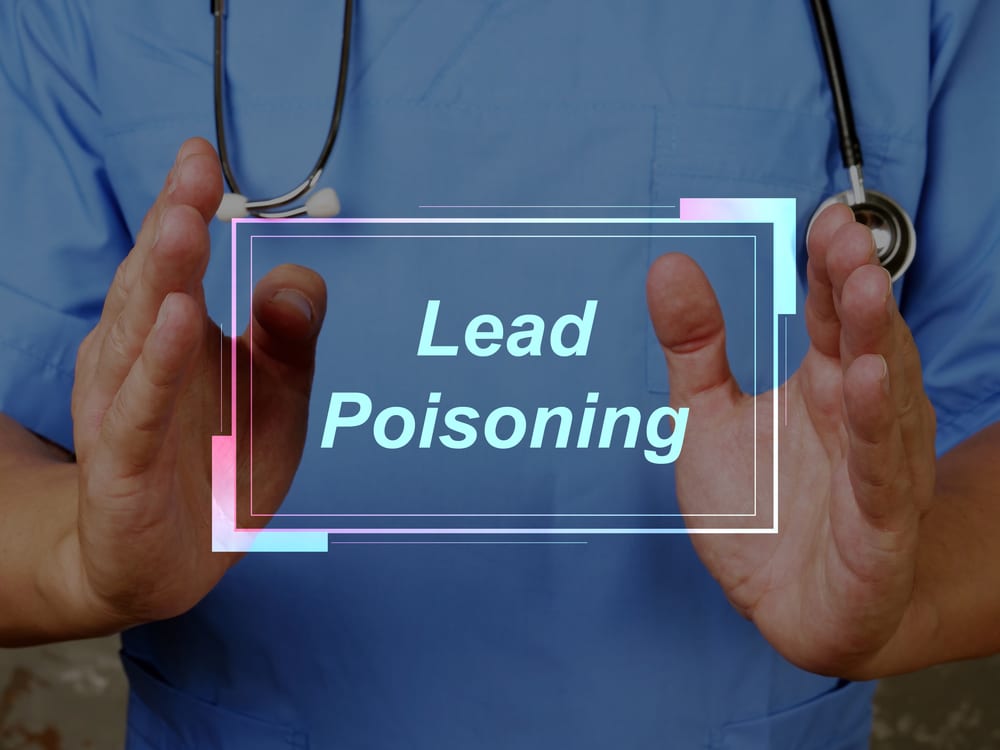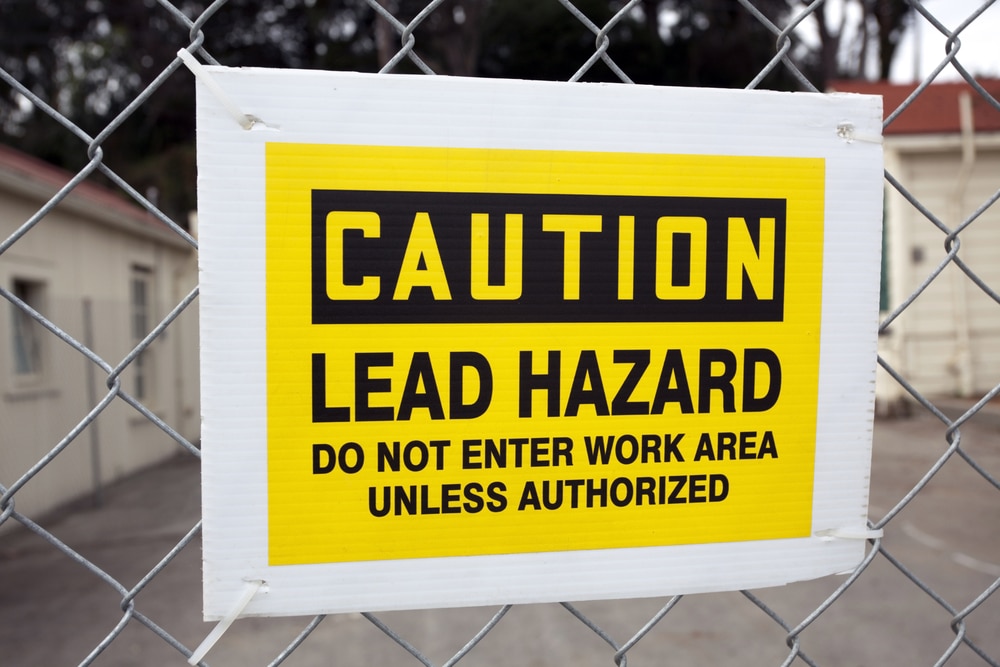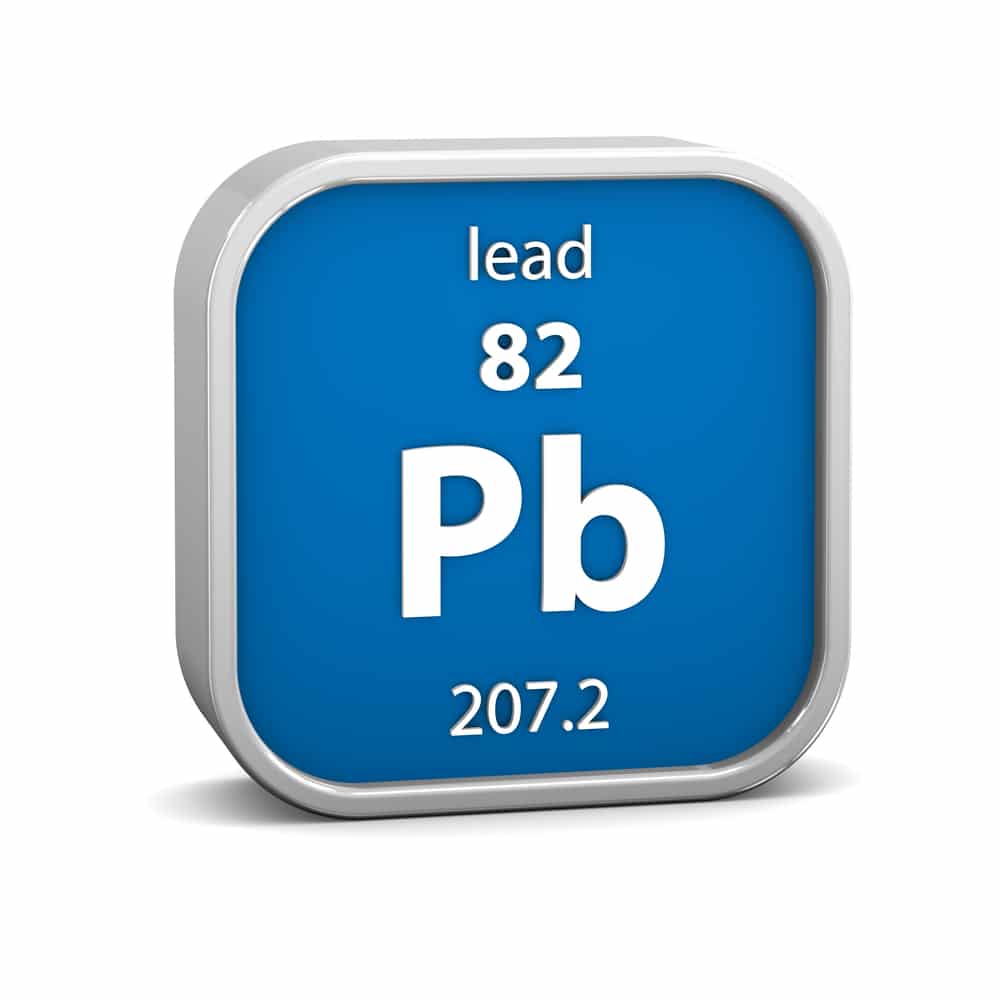Routes of Exposure for Lead in the Workplace

Occupational exposure to lead has declined significantly in the United States in the mid-20th Century. However, lead exposure and lead poisoning remain very real risks for workers in numerous industries.
Identifying hazardous materials, educating workers, and taking proper precautions to prevent exposure to lead is essential to keep workers healthy and protect corporations against charges of negligence. Exposing employees to hazardous substances without adequate preparation puts companies at risk of civil penalties and lawsuits.
It’s in everyone’s best interest to be aware of the negative health effects of lead exposure and the most common workplace exposure routes. Also, if you want to get your employees trained on lead awareness, we have a course that covers that topic.
About Lead Poisoning
Lead poisoning directly results from exposure to lead or environments containing this metal. Lead is an element that occurs naturally in the Earth’s crust but may also be manufactured. Organic lead tends to be significantly more harmful than the man-made variant, but both are dangerous to humans at any level of exposure.
It was traditionally extremely popular in construction, manufacturing, and numerous other industries due to its versatility. However, a growing body of evidence identified that any exposure to lead compounds could have significant adverse health effects in humans.
It enters the bloodstream and builds up in tissues and blood. High levels of this metal in the body have toxic effects, leading to chronic nausea, organ damage (including brain damage), and potentially death. Lead poisoning in children may also cause learning disabilities.
The Centers for Disease Control (CDC) observes that no matter how much lead an individual is exposed to, there remains a significant risk of adverse health effects. This means there is no “safe” level of exposure to lead; individuals are at risk of lead poisoning wherever the metal is present. It’s, therefore, paramount for employers to ensure that hazards in their workplace are minimized or removed entirely.

What are the Main Routes of Lead Exposure?
The most common historical routes of exposure, such as leaded gasoline, lead piping, and lead-based paint, have either been completely or partially phased out in the United States. Leaded gasoline was outlawed for use in road vehicles in 1996 in the US, although it is still used in some sports cars. It’s also still widely used in aviation.
However, workers still risk being exposed to lead in numerous industries. We’ll cover the most at-risk industries later, but it’s also worth noting that workers risk being exposed to lead in any workplace if leaden products have been used in the building’s construction. Pipes, paint, and other fixtures may place workers at risk even in office environments. Giving your employees some tools to identify lead exposure at work benefits them and you.
Lead exposure may occur through numerous routes. Skin contact, inhalation, and ingestion are the most common routes for exposure. Below, we outline the most common ways this metal enters the body and where these hazards might present themselves in the workplace.
Skin Contact
Lead occupational exposure can occur through skin contact with leaden substances. Organic lead is considered much more likely to enter the bloodstream through skin contact than inorganic metal, but it is possible to increase blood lead levels through exposure to either.
Leaden Materials
Common leaden materials that workers may be exposed to include:
- Pipes. Old pipes were traditionally made using this metal, which still exists in many buildings. Workers like plumbers are at the most risk of exposure to lead through skin contact with pipework. However, exposed pipes in any older building put workers at risk.
- Paint. Lead-based paint was banned for residential purposes in the US in 1978. However, numerous older properties still contain lead-based paint, which can have an adverse effect on the occupants and any contractors working on the property. Simple skin contact with the paint can increase blood lead levels. Paint chips and dust are also significant risk factors. Older commercial buildings using lead-based paint also place workers at risk.
- Roof flashings. Flashings are often made using lead. They’re a critical part of roof structures, meaning roofing workers or other construction professionals are often exposed to direct skin contact.
- Solder. Solder is widely used in manufacturing, as well as craft and trade industries. Repeatedly handling solder with an uncovered hand can cause lead exposure.
- Some plastic/lead compounds. Many products carry a risk of lead toxicity through contact, even those that seem harmless. For example, plastic and rubber products can often contain lead compounds that can pose a risk to the individual through skin contact.
Lead-Contaminated Soil

Soil is frequently contaminated with lead. This poses a risk directly to farmers and laborers who come into contact with soil, but also a significant risk through ingestion as it enters the food production chain.
The World Health Organization and other bodies have warned that lead levels in the soil are dangerously high. Contamination frequently occurs due to:
- Exhaust fumes. Fumes from cars, aircraft, trains, and other vehicles settle in soil, which acts as a “sink” for heavy metals like lead. This is especially common in urban areas, but farmland near main roads is also susceptible. In many countries where leaded petrol is still permitted, this type of contamination is much more prevalent. This causes localized health problems but has harmful effects further abroad in countries that import most of their food.
- Sewage treatment. Wastewater management sewage sludge is sometimes repurposed as fertilizer. This leads to excess leaden materials from human waste re-entering the food production system via contaminated soil and crops.
- Industrial activities. Mining, manufacturing, smelting, and other industrial processes produce large volumes of fumes and waste that settle into the soil, much like exhaust fumes. These increase the lead levels in nearby soil to potentially harmful levels.
Exposure to leaded soil through contact with the skin is a significant risk to farm laborers, who often work without skin protection and may be occupationally exposed to more lead than the average person. Steps must be taken to protect exposed workers against these common lead hazards.
Shrapnel
Lead poisoning can also come from endogenous exposure, where the metal has already entered the body before it spreads through red blood cells and organs. Shrapnel is a common cause of endogenous exposure.
While shrapnel wounds are most often associated with military activities, tiny pieces of shrapnel can break through the skin in industrial and manufacturing settings. Even a tiny pellet of lead can increase an individual’s blood lead level significantly if it is left untreated. Shrapnel injuries should be identified and treated as soon as possible.
Containers
One of the most prevalent uses of lead is in storing radioactive materials. One of the metal’s chief chemical properties is that it is incredibly dense and fairly cheap, so it can be used to keep much more dangerous materials safely. Lead is often used in scientific research environments for this purpose and in some manufacturing plants.
Inorganic lead is often used for these purposes, as it is less dangerous to handle than organic metal. Researchers are also typically well-informed and provided with adequate PPE; however, individuals should avoid touching protective lead cabinets or containers with their bare hands.
Lead Inhalation
Prolonged exposure to airborne lead can cause elevated blood lead levels and is one of the most common workplace-related routes of exposure. Particles can be inhaled directly into the lungs. They can cause lung damage (including lung cancer) as well as enter the bloodstream through inhalation into the lungs and stomach.
Lead Paint Fumes
While lead paint hasn’t been used for residential projects for decades, lead paint is still used in some industrial cases. Workers using this type of paint can easily be exposed to fumes without proper breathing protection and should undergo a blood lead test regularly.
Employers can mitigate workers’ exposure to lead paint fumes by ensuring they source unleaded paint for all purposes. The convenience of leaded paint for some industrial applications is generally considered a poor excuse for exposing workers to lead toxicity and its health effects.
Smelting
Smelting fumes generally contain this substance as well as other harmful metals. Workers in smelting and manufacturing environments should always have adequate PPE to ensure they’re not inhaling toxic metal levels.
While some lead exposure may be unavoidable in smelting, better PPE as well as improved worker awareness, should reduce the levels to which workers are exposed to harmful fumes.
Recycling
Many recycling operations generate harmful fumes. In particular, lead acid batteries can generate significant levels of dangerous fumes, exposing nearby workers to the risk of lead poisoning. Battery recycling is supposed to be a specialist activity, but this is difficult when batteries aren’t disposed of properly.
Public awareness of the effects of lead batteries is essential to ensuring that batteries are disposed of and processed appropriately. Batteries are often thrown out with regular waste or recycled improperly, increasing the risk that waste operations staff will be exposed to dangerous fumes.

Stripping Paint
Workers may also be exposed to leaded paint fumes when stripping old paint from walls. If the paint is removed with solvents, workers should wear facial protection to minimize exposure to harmful fumes.
This is especially true when working in old residential or commercial buildings. However, leaded paints are still used for some industrial purposes today, so if it’s possible to identify which type of paint was used before it is stripped, it’s easier to protect workers against leaded fumes.
Aviation Fuel
Leaded fuel is still used for aviation. This poses a risk to workers involved in:
- Production of aviation fuel
- Aviation manufacturing & testing
- Working around commercial aircraft
Staff who work on fuelling commercial aircraft are rarely at significant risk of direct content with fuel, but regular exposure to fumes from nearby aircraft in motion can cause adverse health effects.
Cigarette Smoke
While not strictly a workplace hazard, cigarette smoke contains low levels of lead. Repeated passive exposure to cigarette smoke can cause significant health problems and even death – while many of these are not related to lead poisoning, it is another in a long list of risks associated with passive smoking.
Employers should ensure that staff smoking areas are well away from open windows and areas where non-smoking employees or visitors might congregate. Smoking indoors in any workplace significantly increases exposure to cigarette smoke and is illegal in public buildings.
Lead Dust Exposure
Lead dust is also extremely dangerous. Dust particles can easily be ingested or inhaled in the workplace.
Pipes
As leaden pipes get older, lead particles are more likely to enter the atmosphere when the pipes are cleaned, disturbed, or heated. This is an issue in both commercial and residential buildings – commercial cleaners in buildings such as hotels should be aware if cleaning exposed lead pipes is part of their duties.
Plumbers and construction professionals are also at risk of this type of lead exposure. Anyone working on replacing, repairing, or removing lead pipes should wear adequate PPE to prevent inhaling dust as well as protective gloves to reduce the risk of poisoning through the skin.

Food Containers
Some commercial food containers have leaden seals. Lead found in these products is usually invisible, as it’s typically combined with polymers or rubber. However, if the metal has been used in the manufacture of a food container, it should be noted on the lid.
It’s best to look for lead-free food containers, especially in commercial food preparation settings. These are easy to find and cutting this metal out of the workplace wherever possible reduces the risk to workers and customers.
Paint Chips
When leaden paint is stripped without solvents, dust particles will enter the surrounding air. These can be extremely hazardous if inhaled, and workers stripping paint should be provided with adequate PPE to prevent particles from getting into their lungs.
Dust particles are also a hazard in any environment with aging leaden paint. Even leaning a hand on a wall can release tiny particles into the air.
Water
Hazardous metals in drinking water are a common cause of lead poisoning. Old leaden pipes will degrade over time, and particles will enter hot and cold water supplies. Workers can be exposed to these particles through:
- Drinking water. This is especially dangerous, as the metal will enter the bloodstream directly after consumption. Old pipes should be replaced if it’s found that drinking water runs through leaden pipes, although this can be difficult, as many of the oldest pipes are at street level rather than inside commercial properties.
- Water is used for handwashing and other purposes. Metal particles can end up on workers’ skin even if it’s not used for drinking. Regularly washing hands in contaminated water can expose workers directly to skin-based poisoning, but it can also be transferred to food products (e.g., by a worker washing their hands before eating their lunch).
What is the Most Common Method of Lead Exposure?
The most common routes for exposure depend on the workplace in question. Employers should understand the full range of routes and which of these are present in their workplace – e.g., whether leaden paint is used in the building.
Awareness of the unique risks associated with a workplace or type of work means that employers can provide adequate PPE to staff and remove leaden products that present an occupational safety hazard. Chronic lead poisoning is a common workplace hazard but can easily be mitigated by taking time to identify hazards and protect workers.
Workplaces with High Risk of Lead Exposure
Any workplace that features lead stored in some capacity is a health hazard. The National Institute of Environmental Health Sciences has conducted significant research into the causes and effects of lead poisoning and determined that no level of exposure is “safe” for humans.
Below are some of the work environments with significantly increased risk of exposure.

Manufacturing
Manufacturing processes, including soldering, welding, and smelting, pose a significant risk of exposure to toxic fumes. Workers in these areas are known to be at higher risk; however, strict safety procedures, worker education about lead poisoning hazards, and adequate PPE are often not in place.
Employers in the manufacturing industries should be aware that failure to protect workers may lead to civil penalties and lawsuits if it can be proven that lead exposure has adversely affected workers. Appropriate education and training should be in place for all industry workers.
Aviation
Manufacturing, distributing, and working around aircraft fuel poses an exposure risk. The fuel used in aviation is still leaded, unlike that used for commercial vehicles.
A common route of exposure is through fumes from nearby aircraft. This is especially prevalent for exposed workers on airstrips, who may work near dozens or even hundreds of aircraft taking off and landing every day.
Roofing
Roofing requires specialist materials, and lead’s properties mean that it is still one of the most popular materials used for roof flashings. While gloves and facial PPE are common in the roofing industry, employers should ensure their staff understands which materials contain lead and why they must always be handled using gloves.
Construction
Construction workers may encounter a large range of old leaden products, especially when demolishing or renovating older buildings. Leaden paints and leaden pipes are common hazards in older properties and can present a health hazard via direct contact, dust present in the atmosphere, and fumes.
New materials used in construction should be unleaded wherever possible. This is mandated by law for most properties, especially residential buildings.
Plumbing
Plumbers routinely encounter leaden piping, especially when working in older buildings. The face, hands, and arms should all be protected when working around these pipes, as repeated contact can easily lead to harmful levels of exposure.
Hobbies
Hobbyists are often inadvertently exposed to fumes. This is especially common in:
- Stained glass. These items usually contain lead and can present a health hazard if handled without gloves.
- Any activity that requires soldering. Solder usually contains some lead, which can increase the body’s burden when handled or when fumes are inhaled.
- Metalworking. Any type of smelting or even cutting metals can release lead into the atmosphere. It should be done in a well-ventilated space and with adequate protective equipment for the face and hands.
Preventing Lead Exposure in the Workplace
Exposure to toxic metals can cause damage to the immune system, central nervous system, reproductive system, and other organ systems within the body. It can cause cancer and even death in prolonged cases. Lead interferes with many vital processes within the body, compromising blood pressure, damaging blood cells, and causing illness even in mild cases. Lead stored in the body can also be passed along during pregnancy and cause poisoning in infants.
Whether touched, inhaled, or ingested, lead is a persistent danger to workers in so many industries. Here’s how to protect your workers and other adults exposed to lead hazards in your workplace.
Educating Employees
The best way to protect workers is to ensure they’re aware of the effects of lead exposure and poisoning. This can be achieved by improved human services such as training programs for new employees. It can also involve occupational training when starting on a new project, e.g., a construction job in a building where leaden paints are known to be used.
Better staff education and training are central to protecting workers. It’s affordable and straightforward, especially with the use of workplace-specific training videos. It protects workers against harmful exposure and keeps employers safe from lawsuits and civil action.

Identifying Hazards
Every care should be taken to identify potential hazards in the workplace. Paint chips, leaden pipes, and other common causes of poisoning should be listed, and workers should be aware of where they’re located and what PPE should be used when working around them.
A little preparation can make human activities around hazardous materials much safer. It can prevent long-term sickness, which is harmful both to workers and the company.
Using Non-Leaden Tools & Products
This step should be taken wherever leaden products can be replaced with non-leaden alternatives. It should be prioritized if old piping can be removed and replaced with unleaded piping. Old paint should likewise be removed and refreshed with unleaded paints wherever possible.
What are 5 Possible Ways to be Exposed to Lead?
Below are five of the most common types of exposure.
Skin Contact
This metal can be absorbed through the skin, especially if exposure is prolonged or repeated. Workers should be provided with gloves if they’re likely to be handling leaden products.
Inhalation
Fumes can be inhaled and cause significant damage in the lungs. They also enter the bloodstream and cause damage through buildup over a long period, raising blood pressure and causing other adverse health effects.
Consumption
The metal is often accidentally ingested through water that has passed through leaden pipes. It’s also present in many food products that have been grown in contaminated soil.
Endogenous Exposure
If metal gets under the skin, it slowly poisons the body, building up in the bloodstream. Any workers at risk of exposure to shrapnel (e.g., through metalworking) should have their blood lead level routinely tested.
Indirect Exposure
Lead poisoning can occur when least expected. Old paint and old pipes in commercial buildings can expose employees to dust or contaminants through the air or water supply.
What Method Does OSHA Recommend for Monitoring Lead Exposure?
OSHA recommends a regular blood lead test for any employees working in environments with higher-than-average chances of exposure. This should be offered by the company and not at the employee’s expense.
Testing for Lead Poisoning
Blood Lead Levels
A simple blood test can detect unhealthy blood lead levels. It is measured via the body burden, i.e., the amount of harmful materials that have built up in the bloodstream.
A consistently high burden can cause significant health problems. Exposed individuals may report a metallic taste or feelings of nausea, although poisoning is often symptomless in the early days.
Treatment
Blood is often treated with a chelating agent. Chelating agents attract metals in the bloodstream and help flush them out.
It’s also important to immediately remove the individual from whichever hazards have been causing their illness. Employers should offer paid time off for workers who have been exposed to dangerous lead levels in the workplace.
Controlling Routes of Exposure for Lead in the Workplace – Final Thoughts
Major sources of lead poisoning are less common than they were in the mid-20th Century, but the US still has a long way to go to keep workers truly safe.
Employers can take simple steps such as educating workers on common risks and removing hazardous materials from the work environment wherever possible. Better information, improved PPE, and removing outdated hazards are essential to keep workers safe.